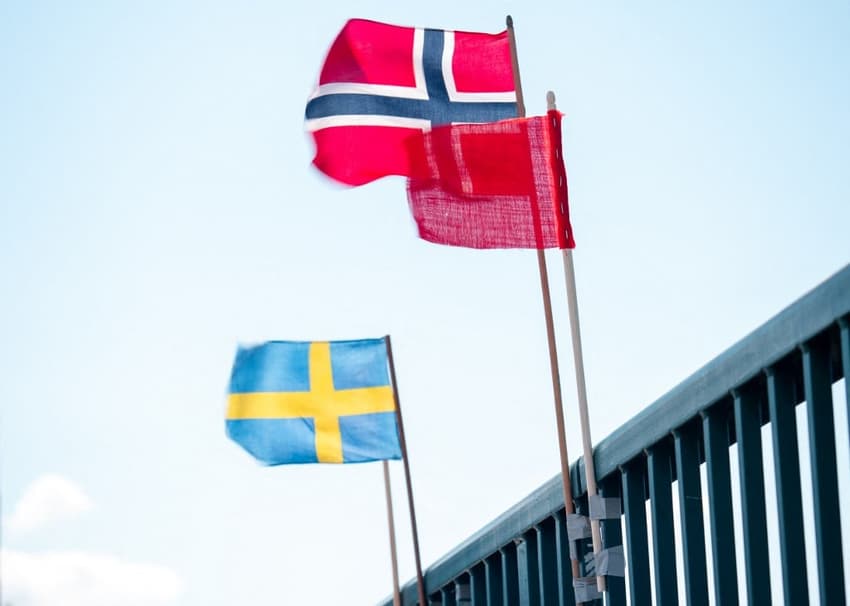High Swedish prices put Norwegians off cross-border shopping trips

Norwegians are spending less money cross-border shopping in neighbouring Sweden, the latest figures from Norway's national data agency show.
Locals in east Norway have long enjoyed the tradition of heading to Sweden for cheaper goods and a more varied product selection. Last year, they spent an estimated 10.4 billion kroner on cross-border shopping trips, figures from the national data agency Statistics Norway show.
However, this is still significantly lower than the previous record set in 2019, Statistics Norway reports.
"When all the travel restrictions were removed on February 12th last year, cross-border trade picked up again, but Norwegians traded less across the border than was usual before the outbreak of the pandemic. Compared to the record year 2019, the trading amount was 35 percent lower in 2022," Kristin Aasestad from Statistics Norway said of the figures.
Additionally, the data shows that Norwegians went on fewer trips across the border for shopping in 2022 compared to the record year of 2019. Overall, the number of trips decreased by just over 40 percent between 2019 and 2022.
One explanation for the decline in Norwegians heading across to neighbouring Sweden to stock up on groceries is a sharp increase in food prices, meaning that Swedish food prices are no longer significantly lower than in Norway.
According to Statistics Norway's figures, food and non-alcoholic beverages in Sweden increased in price by 14.2 percent between 2019 and 2022. Meanwhile, the cost of food in Norway increased by 7.2 percent during the same period. Furthermore, the average spend on a shopping trip abroad has increased from 1,690 kroner in 2019 to 1,835 kroner last year.
"One explanation for why Norwegians spend more money on each shopping trip may be related to the sharp increase in the price of groceries in Sweden and not necessarily that Norwegians put more in the shopping basket," Aasestad.
Just under 97 percent of all shopping trips abroad by Norwegians were to Sweden last year, with Strømstad and Charlottenberg being the two most popular destinations with Norwegians.
Comments
See Also
Locals in east Norway have long enjoyed the tradition of heading to Sweden for cheaper goods and a more varied product selection. Last year, they spent an estimated 10.4 billion kroner on cross-border shopping trips, figures from the national data agency Statistics Norway show.
However, this is still significantly lower than the previous record set in 2019, Statistics Norway reports.
"When all the travel restrictions were removed on February 12th last year, cross-border trade picked up again, but Norwegians traded less across the border than was usual before the outbreak of the pandemic. Compared to the record year 2019, the trading amount was 35 percent lower in 2022," Kristin Aasestad from Statistics Norway said of the figures.
Additionally, the data shows that Norwegians went on fewer trips across the border for shopping in 2022 compared to the record year of 2019. Overall, the number of trips decreased by just over 40 percent between 2019 and 2022.
One explanation for the decline in Norwegians heading across to neighbouring Sweden to stock up on groceries is a sharp increase in food prices, meaning that Swedish food prices are no longer significantly lower than in Norway.
According to Statistics Norway's figures, food and non-alcoholic beverages in Sweden increased in price by 14.2 percent between 2019 and 2022. Meanwhile, the cost of food in Norway increased by 7.2 percent during the same period. Furthermore, the average spend on a shopping trip abroad has increased from 1,690 kroner in 2019 to 1,835 kroner last year.
"One explanation for why Norwegians spend more money on each shopping trip may be related to the sharp increase in the price of groceries in Sweden and not necessarily that Norwegians put more in the shopping basket," Aasestad.
Just under 97 percent of all shopping trips abroad by Norwegians were to Sweden last year, with Strømstad and Charlottenberg being the two most popular destinations with Norwegians.
Join the conversation in our comments section below. Share your own views and experience and if you have a question or suggestion for our journalists then email us at [email protected].
Please keep comments civil, constructive and on topic – and make sure to read our terms of use before getting involved.
Please log in here to leave a comment.